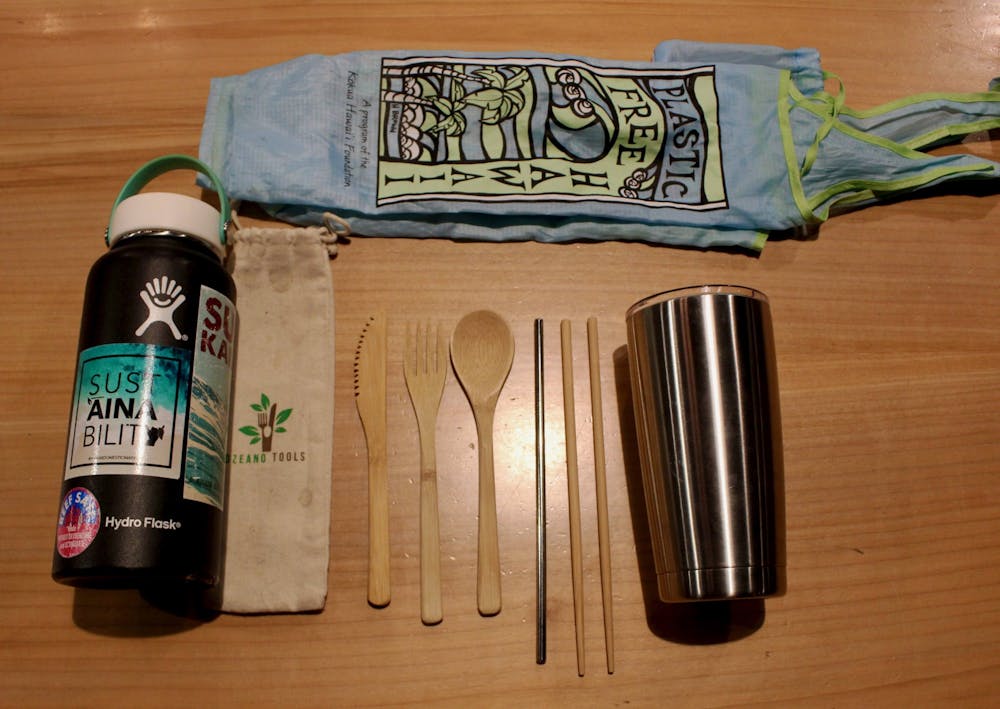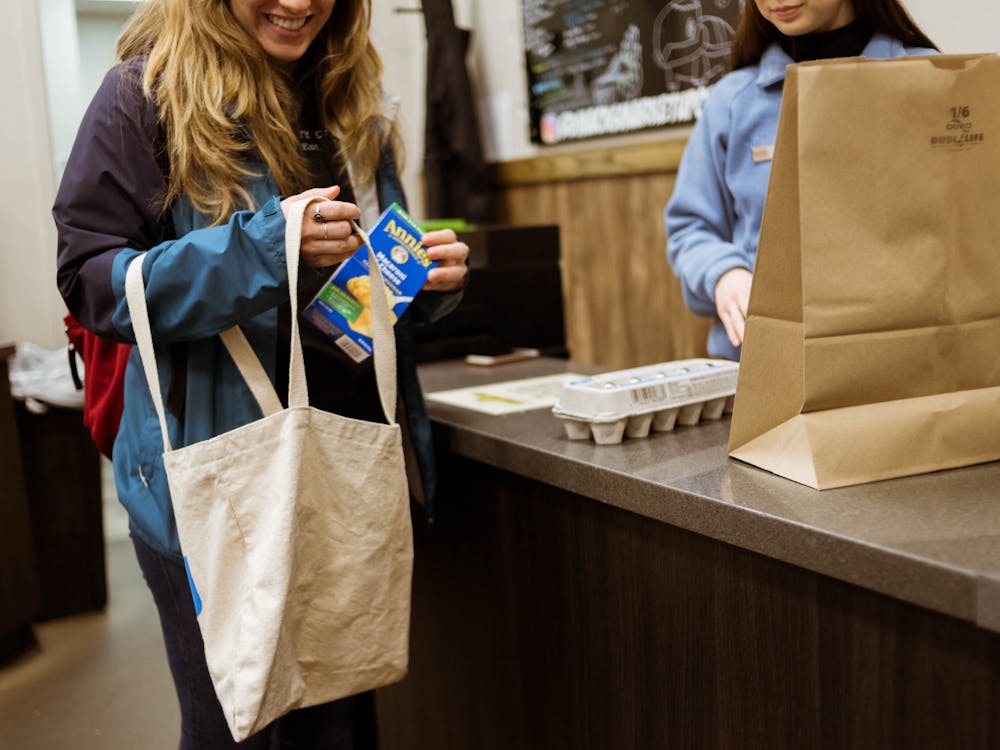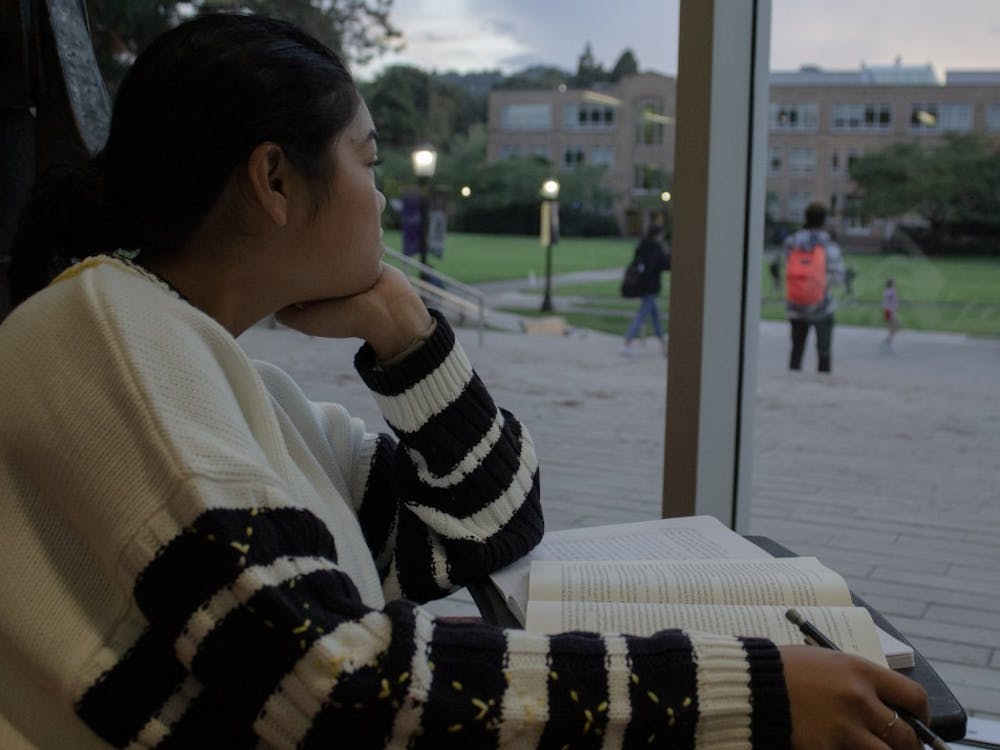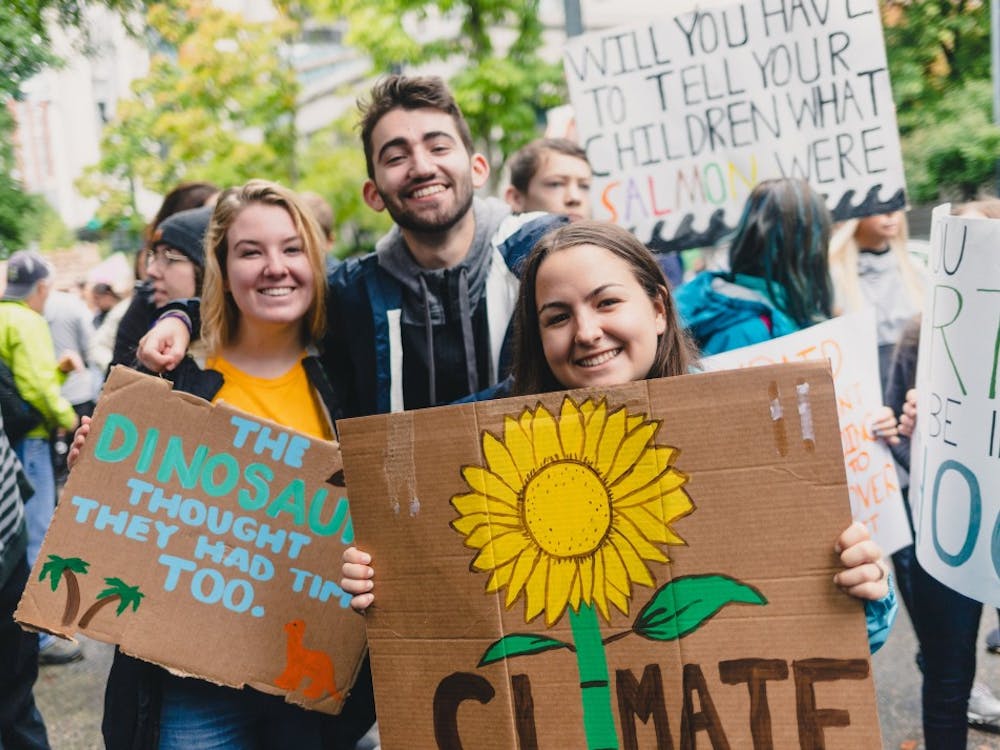The pressure of climate change is an overwhelming and formidable issue. As it continues to be one of the biggest pressing issues for humans, the conversation shifts from actions of the individual consumer to a need for systemic change from corporations, lawmakers and international leaders. Fighting for a significant change for the earth is no longer a trend we can choose to participate in. We all have a responsibility to fight climate change together in any way possible. Whether big or small, here are some ways to reduce your carbon footprint daily.
1. Eat less meat
According to Greenpeace, keeping massive amounts of livestock such as raising cows, pigs and chickens generates as much greenhouse gas emissions as all the cars, trucks and automobiles combined. Animal agriculture is also a leading cause of deforestation, water pollution, air pollution and biodiversity loss.
“With cattle, they produce a lot of methane gases, they just naturally release a lot of gas,” said Kathryn Lampe, sophomore environmental ethics and policy major. “And then the production of meat as a whole uses a lot of fossil fuels, excessive fertilizers and feeding the cattle which takes up a lot of resources.”
You don’t have to go cold turkey on meat by tomorrow. Even just being conscious of your meat intake and eating fewer meals with meat each week can impact your carbon footprint and even your health. Research shows that eating more plant-based foods can reduce the risks of heart disease, stroke and diabetes.
“I think an important thing to say is that you don’t have to give up meat entirely,” Lampe said. “There are Meatless Monday trends that people could try, and there's also a lot of alternatives to traditional meat. It doesn’t have to be an all or nothing thing, even just trying to make one vegetarian meal can be a good way to reduce it.”
2. Drive less
Cars collectively account for one-fifth of all the United States’ emissions. By using alternatives to driving such as carpooling, walking and biking you can easily reduce traffic congestion and greenhouse emissions. It’s also an easy way to connect with friends, save money and get a little exercise while getting to class.
“Carpooling, biking, walking and taking public transit are all manageable ways to help especially since there's a lot of places nearby in the Portland area,” Lampe said. “When you add up everyone that’s commuting and everyone that’s driving, it has a really big impact on the environment.”
3. Reduce, Reuse, Recycle!
There can be many benefits with recycling. It can help with saving resources by reducing the need to consume natural resources, it saves energy by using industry-ready materials, it protects the environment by reducing greenhouse gas emissions and it reduces incineration.
Knowing what can and can’t be recycled in your area is the first step in becoming environmentally conscious. In the Portland area, information about what you can and can’t recycle can be found here on Portland's planning and sustainability website, along with free printable posters and stickers you can place around your garbage bins.
“I just googled what you can recycle in Portland and they have a whole little list that’s laid out of what you can and can’t recycle,” said Katie Gomes, junior environmental and ethics policy major. “Doing a little bit of research on that can be very effective in your recycling.”
However, to have a bigger impact on the environment you should focus less on recycling and more on reusing and reducing. Buying in bulk can save money, and reduce material waste like packaging, food waste, and greenhouse gas emissions. Next time you need groceries, try thinking of some items you can get in bulk such as cereal, rice, dry ingredients such as flour or sugar, or some dried fruit and candy.
4. Bring your own utensils
According to National Geographic, cutlery is listed as one of the most deadly items to sea turtles, birds and mammals. Carrying your own utensils is easy, cost-efficient and it helps the environment. Amazon has reusable bamboo travel utensils for just $10.
“Try bringing utensils or keeping some in your bag with you,” Gomes said. “You don’t have to use the disposable silverware that they have.”
5. Sewing Club and Thrift Stores
Try repairing your old clothes instead of buying new ones. Fast fashion comes at a huge cost to not only consumers’ wallets but the environment as well. It contributes to water pollution, toxic chemical use and textile waste. If your clothes have gotten slightly damaged or ripped, the University of Portland’s student sewing club “Basic Stitches” has resources to mend your own clothes for free. Located at the Shiley Hall Maker Space, Basic Stitches aims to reduce, reuse and recycle as much as possible.
Another way to help reduce fast fashion is to start buying used clothes. Thrifting is no longer reserved to trendy people trying to find the perfect ‘80s or ‘90s look, but also to the eco-conscious individual trying to reduce their carbon footprint.
“If you can keep reusing things as much as possible, and just buying less of everything in general, especially new things, it’s the best way to decrease your carbon footprint,” Gomes said.
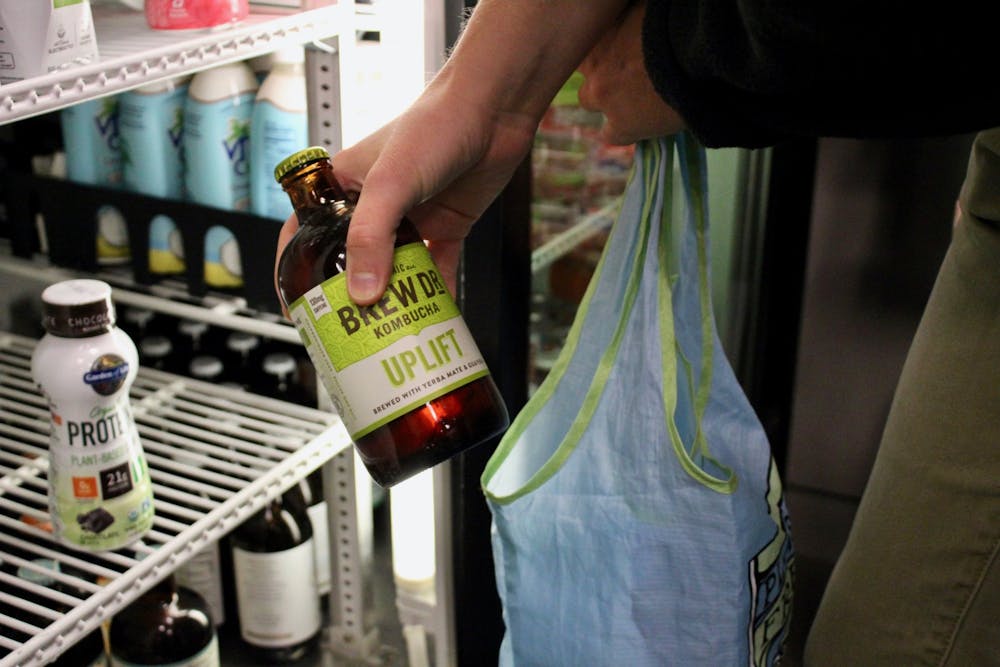
A recent Oregon law charges the consumer for each single-use bag at grocery stores, a policy that has carried to Mack's Market.
6. Bring your own bag to Mack’s Market
An easy way to reduce a lot of single-use products is to start bringing your own reusable bag when getting groceries. Whether you go to Mack’s or Fred Meyer’s, it only takes half a thought to remember to take your reusable bag. Better yet, it can be as easy as stuffing your groceries in your backpack if you forget.
“There's a benefit to not using anything and everything,” Gomes said. “If you can refuse and not use as many things as possible, you’re going to have the least negative impact on this world.”
We all know that plastic bags are terrible for the environment, but the ugly truth is that paper is also harmful. According to ReuseThisBag, paper bags don’t break down any faster than plastic bags in landfills, they take up more space than plastic bags due to their size, it also takes four times as much energy to manufacture, and they generate more air and water pollutants than plastic bags.
“It’s hard because everyone has been trying to be like ‘Oh paper is better than plastic,’ but using none of them is actually the best option,” Gomes said. “The best would be to get your typical reusable bag because those last forever and you can keep using those or just throw it in your backpack.”
7. Be conscious of your water usage
Another trick to helping the environment is to be more conscientious of how you do laundry. Between the harmful detergents, enormous water use, and the significant amount of energy used, laundry can be unknowingly bad for the environment. An easy solution to this problem is by using safer detergents, doing full loads, washing with cold water and washing some items less often.
“Cold water will use less energy,” Gomes said. “And it’s less damaging on the earth, it’s less thorough on the clothes so you’ll have fewer microplastics and stuff that will end up in the oceans. And if you waited longer for each load, you’re optimizing here because your one load is going to be the same amount of water, whether or not you have a full one or a half one, so might as well get the most bang for your buck.”
How you wash your dishes is also an important factor to consider. The difference between handwashing and dishwashing and the impact it has on the environment is how much hot water you use. If you are using the dishwasher make sure you use it with full loads, use an eco-friendly detergent, don't use the heat dry option, and use the most energy-efficient cycle button if your machine has one. If you are handwashing, make sure you use as little water as possible.
8. Get involved!
Portland is an active city, take advantage of these opportunities and participate in local activism events. There are many environmental nonprofits that you can volunteer with or donate to if you are able to.

In today's age, every choice you make contributes to your carbon footprint - including the produce you buy and the brands you support.
9. Encourage others to make changes, even small ones
It's important to encourage your peers into seeing the significance one person's actions can make. Giving your friends empowerment along with information can show them just how easy reducing your carbon footprint can be. We witnessed just how fast the straw movement caught on across the world; who’s to say that we can’t do that again?
If you don’t know where to start, try calculating your own carbon footprint.
“I think that a lot of the times people become really discouraged because it seems like there's so much to be done,” said Clara Lietz, junior environmental ethics and policy major. “But you need to understand that there are other people with you in this. Individual actions do have such a powerful impact.”
10. Vote for the Earth
We have so much power as young adults to make a change. Voting needs to reflect your priorities as climate change is a geopolitical issue. Look deeply at what candidates say and do about climate change and make a vote for Earth. An in-depth look at each candidate’s stance on climate change can be found here.
Your votes have the power to enact great change around you and doesn't have to be difficult.
Voting can be as easy as a six-step process: 1. Register to vote, 2. Research political parties and candidates, 3. Know the issues, 4. Check state rules and regulations, 5. Find your polling race, 6. Cast your ballot.
Realize that even outside of the ballot booth, you are constantly voting with your dollar. The brands that you support are an instrumental part of your carbon footprint. Take the time to research brands with more sustainable values and to demand conscientious action from major polluting corporations like Coca-Cola and Nestlé — brands responsible for household favorites like Smart Water, Odwalla, Simply Orange, Cheerios, Häagen-Dazs and more.
“Students should keep in mind that their actions do have a powerful difference,” Lietz said. “Because it’s not only the effect of keeping that piece of plastic out of a landfill but rather, the effect of shifting a culture, especially at such a pivotal age where we are learning so much and developing so much and forming actions that are going to last for the rest of our lives.”
Tessa Rodgers is a reporter for The Beacon. She can be reached at rodgers21@up.edu.



